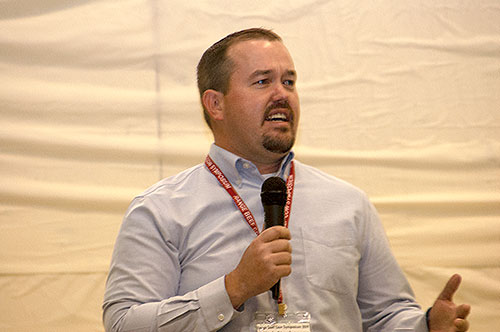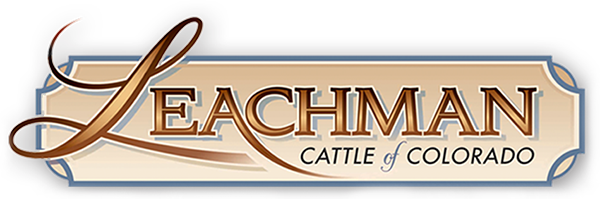Precision Grazing Technology
Technology application can help cattlemen better understand grazing dynamics.
MITCHELL, Neb. (Nov. 20, 2019) — How much forage for grazing will your ranch produce during the next grazing season? That’s a difficult question to answer because forage production can vary so much from year to year. Precipitation is a big factor. Both the amount received and when it is received matter. So does rangeland topography. Hills, valleys, slopes and swales exhibit differences in soils, moisture accumulation and plant species composition, and thus influence total forage production.
According to University of Nebraska Range Management Specialist Mitch Stephenson, there are tools available to help producers predict forage production. Likening them to the precision ag tools applied to crop production, Stephenson discussed some of the new and developing rangeland management technologies during the 26th Range Beef Cow Symposium hosted Nov. 18-20 in Mitchell, Neb.
 |
University of Nebraska Range Management Specialist Mitch Stephenson overviewed some tools available to help producers predict forage production. [Photo by Troy Smith] |
According to Stephenson, Grass-Cast is a freely available tool that forecasts plant production early in the growing season to help producers make management decisions for critical drought trigger dates, stocking rates and grazing rotations.
“Grass-Cast is an online platform that provides growing-season forecasts on estimated increases or decreases for the long-term mean in total plant production,” explained Stephenson.
“Grass-Cast uses observed and forecasted weather, evapotranspiration, a normalized difference vegetation index (a land greenness value collected using satellite sensor data), and known relationships between historical weather data and grassland production to generate forecasts for predicted total plant biomass during the growing season at the county level.”
Stephenson said another free online tool called the Rangeland Analysis Platform uses satellite imagery to measure vegetative cover as compared to bare ground. It can be used to help track rangeland health and form management strategies.
Shifting the discussion to technology that helps understand cattle grazing behavior, Stephenson said GPS tracking devices are being used to identify grazing use patterns and develop grazing strategies to either increase or decrease grazing pressure in strategic locations for specific management goals.
Ear tags are now being marketed that can track the movements of an animal and estimate daily grazing times and movement patterns. Like a Fitbit® can monitor a human’s movements, number of steps and other health measures, these ear tags can take estimates of the amount of time an animal spends grazing or resting and develop algorithms to assess individual animal health. Stephenson said these technologies are continually being improved to identify individual sickness, heat detection and parturition.
Stephenson said current research in western Nebraska and eastern Wyoming, conducted by the USDA Agriculture Research Service and the University of Nebraska, is using GPS tracking and fecal DNA sequencing to better understand opportunities and challenges associated with early-season targeted grazing on cheatgrass. With the data gathered, researchers are able to make better predictive models of when cattle are grazing (or not grazing) cheatgrass. The overall goal is to further pinpoint the period when grazing is most effective based on the grazing behavior of cattle.
In concluding remarks, Stephenson called the free, online Grass-Cast and Rangeland Analysis Platform “good tools” to augment but not replace the art and skill of experienced range managers. Tools for monitoring cattle grazing behavior are expensive to apply and are more suited to research until costs are reduced.
“These technologies add more tools to the larger grazing management toolbox,” said Stephenson.
Listen to Stephenson’s presentation, view his PowerPoint and read the proceedings accompanying his presentation in the Newsroom at www.rangebeefcow.com.
The Range Beef Cow Symposium XXVI was hosted Nov. 18-20 at the Mitchell Events Center at the Scotts Bluff County Fairgrounds, Mitchell, Neb. Sponsored by the Cooperative Extension Service and animal science departments of the University of Wyoming, South Dakota State University, Colorado State University and the University of Nebraska, the biennial symposium offers an educational program geared toward ranching in the West.
Angus Media provides online coverage of the event at www.rangebeefcow.com">www.rangebeefcow.com, courtesy of sponsorship by Leachman Cattle of Colorado. Visit the site Newsroom for summaries of the sessions, proceedings and PowerPoint presentations provided by the speakers, and audio if available. For more information about the website, contact the editorial team at 816-383-5200.
Editor’s Note: This summary was written under contract or by staff of the Angus Media, which retains the copyright. To request to reprint this article, contact Shauna Rose Hermel, editor, at 816-383-5270. PowerPoints are posted with permission of the presenter and may not be reproduced in whole or in part without the express permission of the presenter. Angus Media claims copyright to this website as presented. We welcome educational venues and cattlemen to link to this site as a service to their audience.
Angus Media's coverage of the event is made possible through collaboration with the event committee and via sponsorship of Leachman Cattle of Colorado. For questions about this site, or to notify us of broken links, click here. Look for additional coverage in the Angus Journal, the Angus Beef Bulletin, the Angus Journal Daily, and the Angus Beef Bulletin EXTRA.



